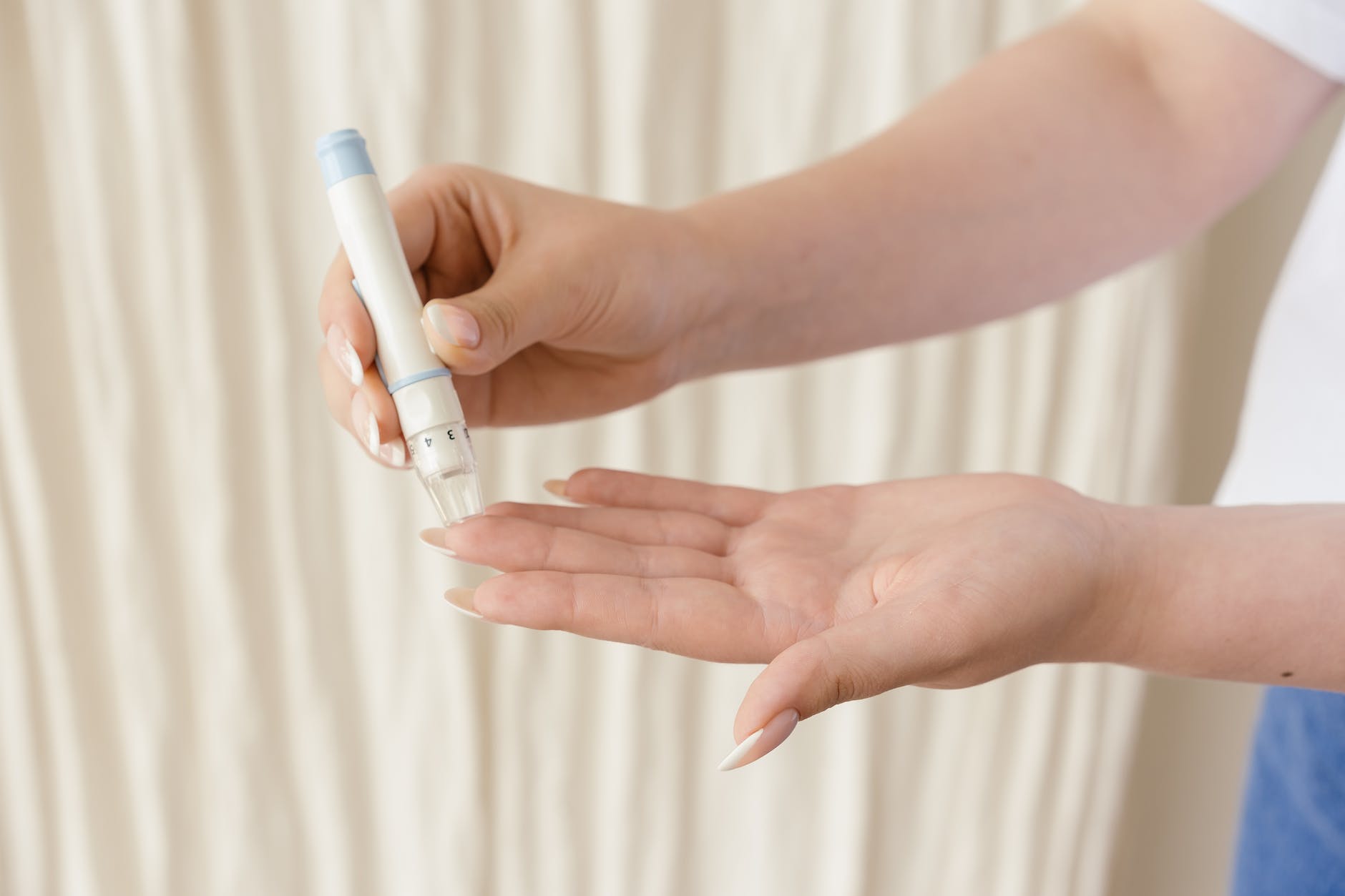How to Control Diabetes: Avoid White Flour & More


- How to Control Diabetes: Avoid White Flour & More
- Understanding Diabetes: Causes and Types - How to Control Diabetes
- The Role of Diet in Diabetes Control - How to Control Diabetes
- Creating a Diabetes-Friendly Meal Plan - How to Control Diabetes
- Lifestyle Changes to Support Diabetes Control - How to Control Diabetes
- Medications and Monitoring for Diabetes Control - How to Control Diabetes
How to Control Diabetes: Avoid White Flour & More
Diabetes control is crucial in maintaining a healthy lifestyle. One key aspect is managing your diet. Avoiding white flour and other high-carb foods can help regulate blood sugar levels. Planning balanced meals, incorporating whole grains, protein, and healthy fats can be beneficial. Lifestyle changes such as regular exercise, weight management, stress reduction, and proper sleep hygiene also support diabetes control. Monitoring blood sugar levels and working with healthcare professionals are essential for optimal management. Let's explore these topics further to empower better diabetes control.
Understanding Diabetes: Causes and Types - How to Control Diabetes


Diabetes is a chronic condition characterized by elevated blood glucose levels. To effectively control diabetes, it is crucial to understand its causes and the different types it manifests as. This understanding can help individuals make informed decisions about diabetes management and lifestyle adjustments.
What is Diabetes?
Diabetes is a metabolic disorder in which the body struggles to regulate blood glucose levels. Glucose, obtained from the food we consume, is the primary source of energy for cells. However, insufficient production or utilization of insulin - the hormone responsible for glucose entry into cells - results in elevated blood glucose levels.
Types of Diabetes
There are two main types of diabetes: type 1 and type 2.
Type 1 Diabetes: In type 1 diabetes, the body's immune system mistakenly attacks and destroys the insulin-producing cells in the pancreas. As a result, the body cannot produce sufficient insulin to regulate blood sugar levels. This type of diabetes is typically diagnosed in childhood or adolescence.
Type 2 Diabetes: Type 2 diabetes occurs when the body fails to use insulin effectively or doesn't produce enough of it. This form of diabetes is often associated with poor lifestyle choices, such as unhealthy diets and sedentary habits, and it commonly develops in adulthood. However, it is becoming increasingly prevalent in younger individuals as well.
Risk Factors for Diabetes
Several factors increase a person's risk of developing diabetes:
- Family history: Having a family member with diabetes, especially type 2 diabetes, increases the risk.
- Obesity: Excess body weight, particularly around the waist, is a significant risk factor.
- Unhealthy diet: Consuming a diet high in processed foods, sugary beverages, and saturated fats contributes to diabetes risk.
- Sedentary lifestyle: Lack of physical activity and prolonged periods of sitting increase the risk of diabetes.
- Age: The risk of developing type 2 diabetes increases with age, particularly after the age of 45.
- Ethnicity: Certain ethnic groups, such as African Americans, Hispanics, and Native Americans, have a higher risk of diabetes.
Understanding the causes and risk factors associated with diabetes helps individuals take proactive steps towards prevention and effective management of the condition.
The Role of Diet in Diabetes Control - How to Control Diabetes


In managing diabetes, maintaining a healthy diet plays a crucial role. A well-planned diet can help regulate blood sugar levels and reduce the risk of complications. This section will explore the importance of a healthy diet for diabetes, highlight the impact of white flour and carbohydrates, and provide practical tips for managing blood sugar levels through diet.
Importance of a Healthy Diet for Diabetes
A healthy diet is essential for individuals with diabetes to manage their condition effectively. Consuming a balanced variety of foods from all food groups helps maintain stable blood sugar levels. It is recommended to focus on nutrient-rich options, including fruits, vegetables, whole grains, lean proteins, and low-fat dairy.
Foods to Avoid: Impact of White Flour and Carbohydrates
In a diabetes-friendly diet, it's important to limit or avoid certain foods that can significantly impact blood sugar levels. Foods high in refined carbohydrates, such as white flour, white rice, and sugary drinks, can cause sudden spikes in blood glucose. These should be substituted with healthier alternatives like whole grain products, brown rice, and sugar-free beverages to better manage diabetes.
Tips for Managing Blood Sugar Levels through Diet
Here are some practical tips to help manage blood sugar levels through diet:
- Monitor carbohydrate intake: Pay attention to portion sizes and choose complex carbohydrates with a low glycemic index
- Incorporate fiber-rich foods: Include plenty of fruits, vegetables, and whole grains in your meals
- Choose lean proteins: Opt for lean meats, poultry, fish, and plant-based protein sources
- Limit saturated and trans fats: Reduce the intake of fatty meats, fried foods, and processed snacks
- Control sugary treats: Indulge in sweets occasionally and opt for sugar-free alternatives
By implementing these dietary strategies, individuals with diabetes can effectively manage their blood sugar levels and improve overall health.
Creating a Diabetes-Friendly Meal Plan - How to Control Diabetes


Creating a diabetes-friendly meal plan is crucial for managing blood sugar levels and promoting overall health. By carefully selecting and balancing the types and quantities of food, individuals with diabetes can ensure they maintain stable glucose levels throughout the day.
Planning Balanced Meals for Diabetes
When planning meals for diabetes, it's important to include a variety of nutrient-rich foods from different food groups. This helps to ensure a well-rounded and balanced diet. Aim to incorporate:
- Fruits and vegetables: These provide essential vitamins, minerals, and fiber.
- Whole grains: Opt for whole grain bread, brown rice, and whole wheat pasta to increase fiber intake and support steady blood sugar levels.
- Lean proteins: Choose lean meats, poultry, fish, eggs, legumes, and tofu to provide essential amino acids without excessive fat or cholesterol.
- Healthy fats: Include sources of healthy fats such as avocados, nuts, seeds, and olive oil to support heart health and provide satiety.
- Dairy or dairy alternatives: Incorporate low-fat milk, yogurt, or fortified plant-based milk for calcium and other essential nutrients.
Incorporating Whole Grains and Fiber
Whole grains are an excellent choice for individuals with diabetes, as they have a lower impact on blood sugar levels compared to refined grains. Including whole grains in meals can provide a steady release of glucose into the bloodstream, preventing spikes in blood sugar. Examples of whole grains to incorporate into a diabetes-friendly meal plan include:
- Oats
- Quinoa
- Barley
- Brown rice
- Whole wheat bread
In addition to whole grains, it's essential to prioritize fiber intake. Fiber helps regulate blood sugar levels, improves digestive health, and promotes satiety. Incorporate fiber-rich foods, such as:
- Legumes (beans, lentils, chickpeas)
- Vegetables (broccoli, Brussels sprouts, spinach)
- Fruits (berries, apples, pears)
- Nuts and seeds
Balancing Protein and Healthy Fats in Your Diet
Protein and healthy fats are important components of a diabetes-friendly meal plan. Including adequate protein helps stabilize blood sugar levels and promote feelings of fullness. Choose lean sources of protein like skinless poultry, fish, legumes, and tofu.
Healthy fats are also essential for overall health, including heart health. Incorporate foods rich in unsaturated fats, such as avocados, nuts, seeds, and olive oil. However, it's important to watch portion sizes, as fats are calorie-dense.
Be mindful of saturated and trans fats from sources like fatty cuts of meat, full-fat dairy products, and fried foods. Limiting these unhealthy fats can help reduce the risk of heart disease, which is a common concern for individuals with diabetes.
By planning balanced meals, incorporating whole grains and fiber, and balancing protein and healthy fats, individuals can create a diabetes-friendly meal plan that promotes stable blood sugar levels, overall health, and wellbeing.
Lifestyle Changes to Support Diabetes Control - How to Control Diabetes


Implementing lifestyle changes is crucial for effectively managing diabetes and promoting overall health. By making simple adjustments, individuals can enhance their quality of life and minimize the risk of complications.
Regular Physical Activity and Its Benefits
Engaging in regular physical activity is essential for individuals with diabetes. Exercise helps control blood sugar levels, improves insulin sensitivity, and promotes weight management. Aim for at least 150 minutes of moderate aerobic activity, such as brisk walking or cycling, every week. Additionally, incorporate strength training exercises twice a week to build muscle and boost metabolism.
Managing Weight and Diabetes
Managing weight is a crucial aspect of diabetes control. Excess weight can contribute to insulin resistance and worsen glucose control. Incorporating a healthy and balanced diet, along with regular physical activity, can aid in weight management. Aim to achieve and maintain a healthy body weight by following a nutritious eating plan and adopting a sustainable exercise routine.
Stress Management and Sleep Hygiene for Diabetes
Stress management and prioritizing sufficient sleep are vital for individuals with diabetes. Chronic stress can impact blood sugar levels and increase the risk of complications. Incorporating stress-reducing activities such as mindfulness, deep breathing exercises, and hobbies can help manage stress levels. Additionally, ensuring a restful night's sleep by following a consistent sleep schedule and creating a calming bedtime routine is critical for overall health and diabetes control.
By making positive lifestyle changes, individuals can improve their diabetes management and overall well-being. Regular physical activity, weight management, stress reduction, and quality sleep are all essential components of a healthy lifestyle for individuals living with diabetes. Committing to these changes, in addition to appropriate medical care, can lead to better control of blood sugar levels and reduced risk of complications.
Medications and Monitoring for Diabetes Control - How to Control Diabetes


Medication and regular monitoring are crucial aspects of managing diabetes effectively. By understanding the importance of medications, monitoring blood sugar levels, and working closely with healthcare professionals, individuals with diabetes can maintain optimal control over their condition.
Importance of Medications in Diabetes Management
Medications play a vital role in managing diabetes by helping to regulate blood sugar levels. Depending on the type of diabetes, people may need to take insulin injections, oral medications, or a combination of both. These medications work by either increasing insulin production, enhancing insulin sensitivity, or slowing down the absorption of carbohydrates in the digestive system.
It is essential for individuals with diabetes to understand the specific medications prescribed by their healthcare professionals. Taking medications as prescribed and adhering to the recommended dosages and timing is crucial for optimal control of blood sugar levels.
Monitoring Blood Sugar Levels
Frequent monitoring of blood sugar levels is key to understanding how different factors can affect diabetes management. Regular self-monitoring using a glucose meter allows individuals to track their blood sugar levels throughout the day and make necessary adjustments to their medication and diet.
Healthcare professionals may also conduct periodic blood tests to assess long-term blood sugar control, such as the A1C test. This test provides an average blood sugar level over the past two to three months, giving important insights into overall diabetes management.
Working with Healthcare Professionals for Diabetes Control
Collaborating with healthcare professionals, such as endocrinologists, diabetes educators, and registered dietitians, is essential for effective diabetes control. These professionals have the expertise to provide personalized guidance on medication management, blood sugar monitoring, and lifestyle modifications.
Regular visits to healthcare professionals allow for ongoing monitoring and adjustment of treatment plans based on individual needs and changing circumstances. They can offer valuable support, education, and resources to help individuals with diabetes make informed decisions regarding their overall health and diabetes management.
By recognizing the importance of medications, diligently monitoring blood sugar levels, and actively engaging with healthcare professionals, individuals with diabetes can enhance their ability to control the condition and lead a healthy, fulfilling life.
- Control Your Diabetes with the Power of Vitamin C and Vitamin E: Learn How to Cure Diabetes
- Controlling Blood Sugar in Type 2 Diabetes: Discover the Natural Path to Managing Your Condition
- Controlling Diabetes with Natural Health Products: How to Cure Diabetes with Effective Solutions
- Coping with Diabetes: A Guide to Managing and Overcoming Diabetes
- Could You Have Diabetes And Not Even Know It? Discover How to Cure Diabetes Now!


